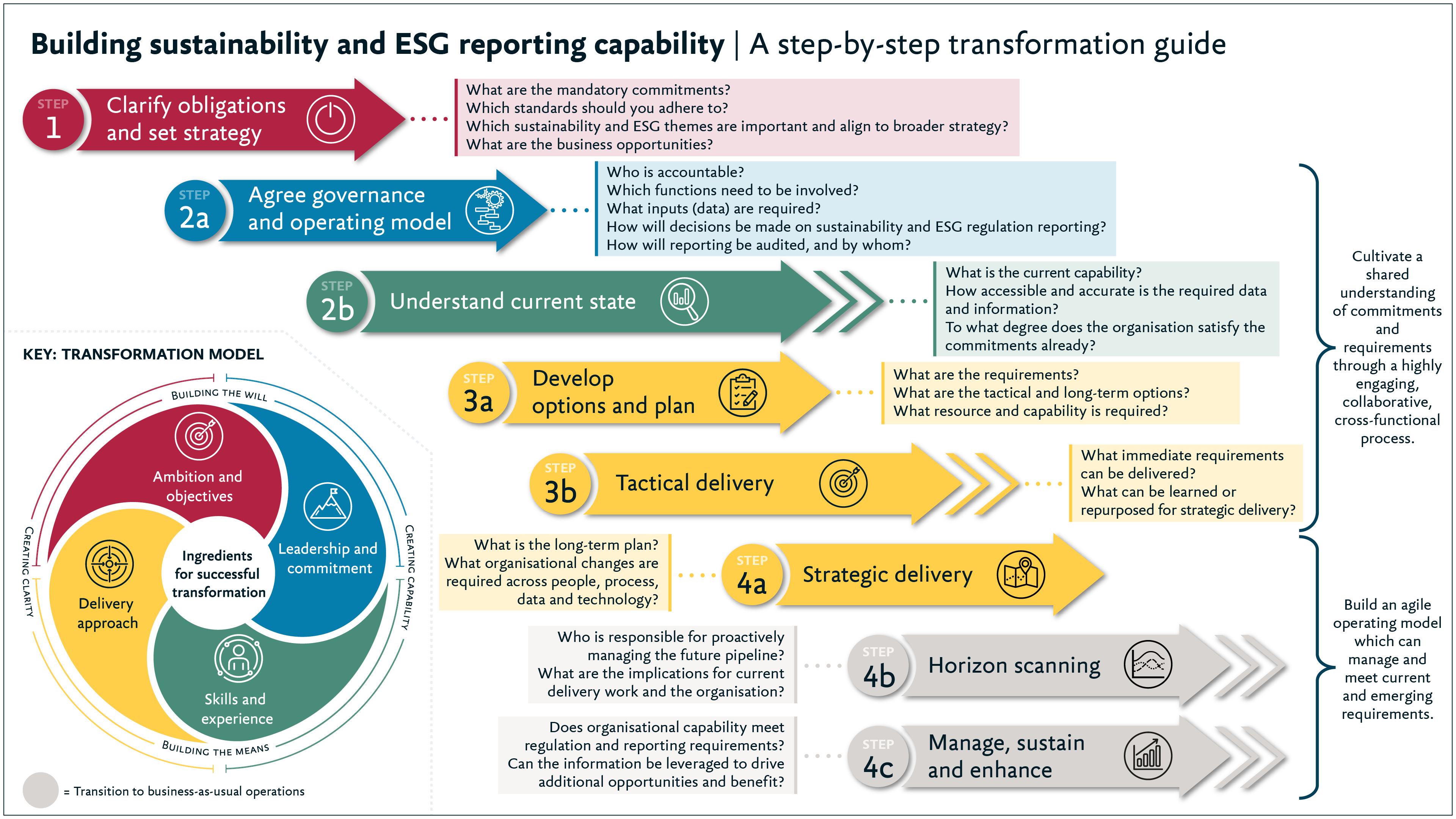Sustainability and ESG regulation continues to change rapidly, with a growing focus on compliance. Organisations increasingly need to demonstrate adequate evidence that they meet mandatory requirements.
For many organisations, building, maintaining and maximising sufficient reporting capability will require significant transformation. Here is a step-by-step guide, outlining the key actions organisations need to take.

1. Set your sustainability and ESG strategy
Provide clarity on the mandatory commitments and then make informed strategic decisions on the standards to which the organisation should adhere, which may include broader, non-mandatory targets. To do this, organisations need to consider which major sustainability and ESG themes are important to them and how these align with the broader business strategy.
Leading organisations will look beyond ESG regulation as compliance or risk management. When viewed as a strategic imperative, sustainability and ESG action may also unlock opportunities and deliver tangible business benefits, depending on the industry.
2. Agree the sustainability and ESG governance and operating model
Agree who’s accountable, which functions need to be involved, where inputs (data) are required and how decisions are made in relation to sustainability and ESG regulation reporting.
Don’t forget to include audits in the model, establishing how reporting will be audited and by whom.
Once the model has been agreed, the organisation can then assess its current state and how it measures up against the target. Look at current reporting capability and how it’s distributed across different functions, who has access to it, and its ability to meet known and emerging commitments.
3. Develop transformation options for meeting sustainability and ESG requirements
Detail the transformation requirements and then outline tactical and long-term options to meet them. Consider the resource and capability required to support these plans.
Mobilise a tactical delivery team to act on any immediate requirements. This should include gathering information for strategic delivery, the next stage of the transformation journey.
4. Strategic transformation delivery for sustainability and ESG
Set out the long-term plan for meeting sustainability and ESG commitments, and the organisational changes required to support this on an ongoing basis. Assess required change across all areas, including people, process, data and technology.
Horizon-scanning should take place throughout transformation delivery and then become a business-as-usual activity. Organisations should apply dedicated resources to proactively scan for emerging requirements, manage the future pipeline of regulatory and non-mandatory requirements, and understand the implications. Once the right structure and capability is in place, this should transition to a business-as-usual activity.
Sustain and enhance impact by ensuring organisational capability can not only meet regulatory requirements but also successfully leverage the information generated. This will enable organisations to drive additional opportunities and benefits, which could potentially include:
- Catalyst for innovation
- Customer or brand loyalty
- Access to and retention of talent
- Access to finance
- Cost and operating efficiencies
Transformation for successful sustainability and ESG reporting
Most firms have only just started building their capability to report on non-financial elements of their business, including sustainability and ESG metrics. More forward-looking organisations are considering whether to abide by even broader, non-mandatory standards as this could potentially open up additional business opportunities.
While the scale of this challenge should not be underestimated, applying the key ingredients for successful transformation will enable organisations to plan, implement and sustain the reporting capability they need.










